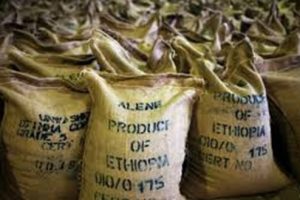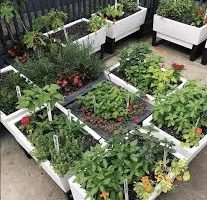BY ADDISALEM MULAT
There can be no denying that the left, right, and center of the various regions of the country have been endowed with quite a lot of natural resources that can take the country to new horizons if put to use in an appropriate manner by pertinent bodies.
By its very nature, Ethiopia is widely known for its untapped natural resources that help the whole population to pull themselves out of the quagmire of poverty. On top of that, the various regional states of the country are full of natural resources that can dramatically transform the lives of every Tom, Dick, and Harry beyond a shadow of a doubt.
In a similar manner, the region is one of the federal states of Ethiopia which is positioned in the Northwest of the country bordering Sudan in the west, Oromia State in the East, Amhara in the North, and Gambella in the South.
The miscellaneous regional states of the country take account of the Southern Nations, Nationalities and Peoples Region (SNNPR), Amhara Regional State, Oromia Regional State, the Tigray Region, Benishangul-Gumuz National Regional State, Harai, Dire Dawa, and things of that sort.
Notwithstanding the fact that Benishangul-Gumuz National Regional State is underdeveloped in contradiction of some of the regional states of the country, it is accompanied by wondrous natural resources that could speed up the economic growth of the region and that of Ethiopia on the whole.
In a previous interview Dr. Eng. Abubeker Yimam, Dean of School of Chemical and Bio-Engineering at Addis Ababa Institute of Technology, Addis Ababa University gave to The Ethiopian Herald said, “Uranium has been known to exist in Ethiopia as early as the 1950s. However, no commercial mining happen to date. As far as I know, the government is assessing the uranium deposit in Bale and Borena, in the Oromia Regional State.
He went on to say, “The amount of deposit of uranium ore is not yet determined. Uranium also exits at Kenticha together with tantalum. Ethiopia has been exporting tantalite ore without processing. This tantalite ore contains up to 1.5%uranium. A significant amount of uranium can be obtained from processing this tantalite ore.”
Flipping back to the gist, the envisioned target of this writer is to familiarize The Ethiopian Herald esteemed readers with the multifarious natural resources positioned in the length and breadth of the region including the various types of marbles that exist in the Benishangul-Gumuz Regional State.
At the outset, the region is known for its virgin and untouched resources that serve as a magnet for tourists. Every single corner of the Benishangul-Gumuz National Regional State is inundated with a considerable amount of spontaneous and human-induced attractions that can be utilized for the economic and societal purposes of the region.
For the sake of truth, the Benishangul-Gumuz National Regional State takes account of a wide array of raw materials that serve a diverse range of functions. On a side note, the primary diversities of dimension-stone, marble, and granite come to pass in multifarious parts of the region.
In actual fact, an incalculable amount of marble reserves have been under development by private and governmental companies, at a small, medium, and large-scale level in the Benishangul-Gumuz National Regional State.
Right at the moment, a considerable amount of marble resources are currently in the pipeline by both private and governmental businesses, at small, medium, and large-scale levels in the region. Speaking of which, sand and gravel occurrences mainly in areas that underline stream sediments.
According to information obtained from Benishangul-Gumuz National Regional State (BGNRS) investment office, the construction raw materials potential of the region consists of a wide spectrum of deposits.
Strictly speaking, it is no hyperbole to say the Dalleti marble warehouse that is situated in Assosa Zone is one of the largest all over the country has been exploited for a long period of time and comprehensively designed to meet the needs of facades and floor all parts of the country. The marble deposits lie near the village of Dalleti underlain by proterozoic meta-sediments and volcanic, quartzites, greenschist, marbles, and tuff.
The marble is a sequence of silicious metasediments, grey-green to red-brown in color strongly weathered and accomplished by means of quartz grains as well as corroded mafficks in a fine berried mass.
In the same manner, five marble occurrences are revealed in the Denghi plains as well as the Dabus River such as Dabus I, Dabus II, Milendu, Belamor, and Boka river marble occurrences. The marble occurrences are between 40km and 90km distances north of Mendi town which is 600 km far from Addis Ababa.
At the very beginning, Dabus I Marble comes to pass 90km northwest of Mendi town and 1.5 km east of Dabus River. In more concrete terms, Dabus II Marble is located 5kms south of Dabus I occurrences. The marble occurrence is about 50m thick and enclosed by pleated quartz-biotite amphibole gneiss.
In addition to that, the Milendu marble occurrence is 10km south of Dabus I and 5km northeast of Alfasher village that can be by dint of vehicle through a dry-weather road. It is hydrothermally reformed, sub-horizontal, and extends from 50 to 1000m across with a width of 50-100m across. In addition to that Belkore Marble Occurrence is brought into being 50km north of Mendi town and 200-300m north of Belamor village. The marble is white to light grey and fine to coarse-grained.
The Menghi meta-granite occurrences are in recent times proterozoic age, impinging the meta-sedimentary edifice of the identical phase, that take account of biotite, graphite, and chlorite schists, quartzite, meta-sandstone, meta-conglomerate, and quartzo-feldspathic schist and other related aspects. Apart from forming morphologically hills and ridges, the meta-granite occurrence is medium grained and is of biotite-granite.
Fulfilling the required preconditions is a must-do task if Ethiopia is to tap these precious resources and spearhead the much needed economic development the country has been looking for quite a while now.
The Ethiopian herald January 14/2021


